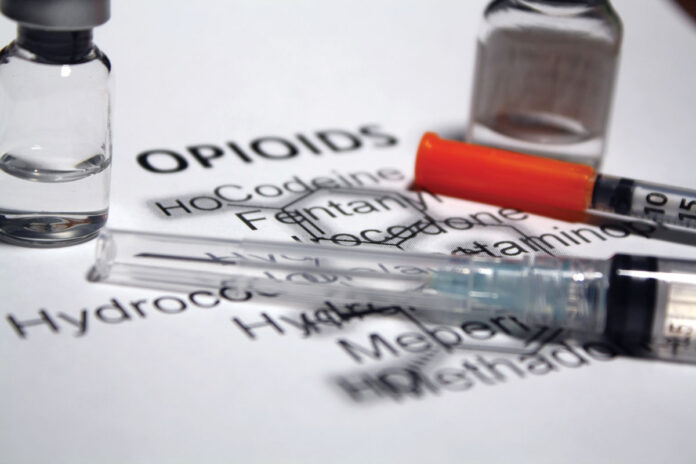A New PATH, San Diego Harm Reduction Coalition and other community outreach groups gathered for a candlelight vigil Aug. 31 at the county administration building in honor of friends and family lost to drug overdoses for International Overdose Awareness day.
This is not the first year the county administration building was lit in purple to honor loved ones lost to overdose, nor the first time people attached photos to a Tree of Remembrance. However, it was the first time organizers needed two trees for all the photos, each one representative of a local family affected by opioid overdose.
According to the California Department of Public Health, over 500 San Diego county residents died of opioid-related overdoses in 2020.
A New PATH Executive Director Gretchen Burns Bergman said those numbers appear to be on the rise for 2022 and harm reduction advocates can’t get services out fast enough.
“International Overdose Awareness day was created as a day to honor lost loved ones but I call this event a vigil and a rally because we carry the message of advocacy,” Bergman said.
That advocacy includes a few messages: eliminate stigma surrounding drug use because it does not appear to reduce use, recognize the intersectionality of racism, poverty and drug abuse, maintain open communication with teens, and promote widespread narcan availability.
Naloxone, distributed under the brand name narcan, can temporarily halt an overdose and potentially buy time for emergency responders to get to someone actively overdosing. The county department of health and human services announced in July they will install 12 naloxone vending machines throughout the region by next summer. The first one is slated for McAlister Institute’s Chula Vista regional recovery center.
“When we first started narcan distribution, it was moms talking to other moms because we’re often the first responders. That approach quickly spread to civic groups, public healthcare groups, criminal justice advocates and then there was a real push to help the unsheltered. A new Path now trains youth but also their parents, school administrators, etcetera to really target that young population,” Bergman said.
A new PATH is currently working on a partnership with Community Through Hope in Chula Vista, regular narcan deliveries to McAlister Institute South Bay Recovery Center and SAY San Diego, although Bergman said she hopes to build those first steps of overdose prevention into recovery support efforts.
The War on Drugs, Bergman said, appears in hindsight to have been a former President Richard Nixon tactic intended to minimize political fallout from “hippies, if you will, who spoke out against the war in Vietnam” but also targeted persons of color and impoverished communities.
“The war on drugs and punitive policies really target people of color and people of poverty. People finally took notice of overdose statistics when white kids in good neighborhoods began dying. Now, we have the opportunity and necessity to broaden the conversation and show how disproportionate the situation is,” Bergman said.
A National Institutes of Health study published by the United States department of health and human services shows Non-Hispanic Black individuals experienced a 38% increase in the rate of opioid overdose deaths from 2018 to 2019 while rates for other race and ethnicity groups held steady or decreased.
However, Bergman said, both her sons experimented with drugs while attending Valhalla High School, where a majority of the students are white.
They “didn’t fall into their addiction because of a sports injury, they experimented— one in ten kids experiments with drugs in high school— and the bottom line is we have to reduce stigma to save lives,” Bergman said.
Harm reduction advocates, she said, promote open communication, including encouraging people to learn what an overdose looks like, being aware of the Good Samaritan law that protects people who give assistance to someone ill or incapacitated from legal retribution, and making narcan more accessible.
“I want it to be as easy to get as a tampon from a machine,” Bergman said.
She also said society needs to pivot from focusing on legal and illegal distribution of drugs and look to treatment options.
“We realized we can’t be yelling about the opioid crisis happening around us while some moms are mourning their kids in jails dying of drug overdose. Instead of retribution, we really desperately need to focus on the people we’re losing,” Bergman said.














